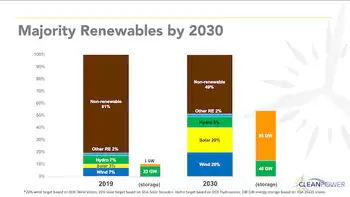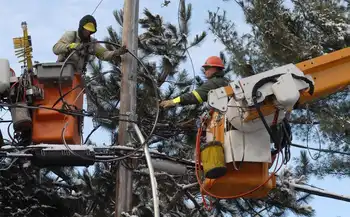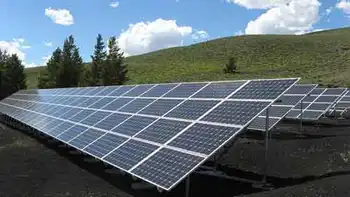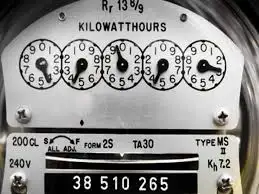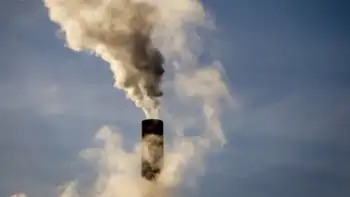Clean energy standard would embrace nuclear
By New York Times
NFPA 70e Training - Arc Flash
Our customized live online or in‑person group training can be delivered to your staff at your location.

- Live Online
- 6 hours Instructor-led
- Group Training Available
The theme was much more ambitious — how to get a national energy plan for 2025 or 2050 when the political process stumbling over next month's agenda and the current bargain price for natural gas dominate industry thinking.
And the primary idea emerging from the so-called "Nuclear Energy Summit" was a proposal to create a national clean energy standard that would set an escalating requirement for low-carbon energy production, but would let states and regions choose their way of complying. Not just renewable energy and energy efficiency, but nuclear power and clean coal, would qualify.
Energy Secretary Steven Chu endorsed the idea both at the conference, sponsored by the energy policy advocacy group Third Way and the Idaho National Laboratory, and later with reporters.
"This is one proposal as a possibility that I think Congress and the administration have to consider very seriously," Chu said.
The administration hasn't abandoned its support for a national renewable portfolio standard, he told reporters. "Absolutely not," he said. But there are many forms of clean energy, he continued. And there are regional differences in energy preferences that are political realities. A broad clean energy standard is "a recognition that you have state-by-state differences," he told reporters.
"I think 50 percent [clean energy] by 2050 is about right. Quite frankly, 25 percent by 2025 is about right.... By 2025, there is enough breathing room so that people can make plans.... If it turns out to be too expensive, we can readjust. I am pretty confident that America, American business, American innovation will drop those prices as time goes forward."
At a time when President Obama has jarred members of the Democratic congressional caucus by reaching out to Republicans on extending the George W. Bush administration's tax cuts, the overture to move to a "clean energy" standard including new nuclear plants and carbon capture and sequestration to clean coal generators is another political gamble.
But whether by design or serendipity, the idea got support at the conference, heavy with industry leaders, and from a handful of members of Congress present.
"There hasn't been a great deal of appetite in the Congress from the other side of the aisle among our Republican friends to embrace renewable electricity standards," said Sen. Tom Carper D-Del.. "There has been interest in trying to find common ground around a clean energy portfolio standard," he added.
"Some form of a clean energy standard might actually bridge the difference between the two sides and enable us to provide some incentives that are needed, given the fact that we are not going to put a price on carbon for a while," he said.
Another conference speaker, Jack Fuller, board chairman of GE Hitachi Nuclear Energy, agreed. "A lot of what we're trying to do is figure out what is the policy of this country going forward. There are other nations in the world that have figured this out.
"If the U.S. government said tomorrow that we want 50 percent clean energy by 2050, the industry around the U.S. would certainly react to that. Some would do nuclear. Some would do wind. Some would be geothermal. Some would be other technologies we haven't even thought of yet, such as solar, that will allow us to progress forward."
"A clean energy portfolio standard, properly done, is a national energy policy for the United States," said David Crane, president and CEO of NRG Energy. He liked the sound of 50 percent by 2050. "There's a certain poetry there."
"I think you have to make it so that every geographic region of the country can comply with something they do within regions. Nuclear is the renewable of the South. Offshore wind is the renewable of the northeast United States. In the center of the country, you've got to give hope to clean coal," he said.
The idea of smaller, modular nuclear reactors enjoyed general support at the conference, offering a strategy to streamline construction in U.S. factories and lower construction costs, bringing projects closer to utility capital capacity.
But conference participants also recited a litany of stumbling blocks and disputes that confront energy policy initiatives. DOE doesn't administer loan guarantee credit subsidy calculations, currently a barrier to new merchant nuclear projects the Office of Management and Budget does, Chu noted. Congressional budget scoring policy handcuffs federal agencies from offering long-term purchase power agreements to utilities that invest in nuclear or renewable energy, said White House climate adviser Carol Browner.
Some industry representatives want more "regulatory certainty" from the Nuclear Regulatory Commission as it reviews designs for new reactors. NRC Chairman Gregory Jaczko replied that a good way to achieve that is for reactor builders to stop "tweaking" the designs they submit to the commission.
There were also reminders that parochial preferences for one energy fuel over another run deep among regions and political parties. Sen. James Risch R-Idaho touted his state's long interest in nuclear power. "We've been pressing it for some time, while all the discussion about wind and solar has been taking place, and admittedly, [those] are the politically correct things to talk about. It grabs all the headlines."
Peter Bradford, vice chairman of the Union of Concerned Scientists, filled the role of the nuclear adversary, challenging the enthusiasm for federal loan guarantees for nuclear power. "The concept of going with an all-of-the-above approach requires some discipline," he said. Nuclear power, he insisted, is too expensive, particularly compared with energy efficiency and conservation strategies.
"We don't use caviar to address world hunger," he said. "Loan guarantees are not free money. They represent a risk transfer from investors to taxpayers. So they are not a savings in the sense that cheaper concrete or cheaper labor is."
Chu acknowledged challenges on many sides. "We can debate until the cows come home as to whether nuclear will ever make the cost bar. You can also say that about wind, about solar, about geothermal. You name it," Chu told the conference.
"The safest way is, don't go forward," he said at another point. "The only trouble with that is, many other countries are going forward.... We just have to take a deep look at is this what we want? If we do nothing, that's what we'll get."





